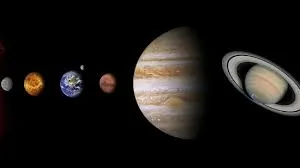A spectacular celestial event occurred on Friday evening as seven planets in our solar system aligned in a rare phenomenon known as a “planetary parade.” This event, visible from various parts of the world, won’t happen again until 2040.
What is a Planetary Alignment?
All eight planets orbit the Sun on roughly the same plane, but at different speeds. This alignment occurs when multiple planets appear on the same side of Earth, making them visible in the night sky simultaneously. While they do not form a perfect straight line, their positioning creates a breathtaking sight for astronomers and skywatchers.
David Armstrong, an exoplanet researcher at the University of Warwick, UK, explained, “Every so often, when everything works out right, they all appear on the same side of Earth, making them visible at once.”
How to Watch the Next Planetary Parade?
For those eager to witness the next alignment in 2040, Armstrong advises: “Step outside and look up.” The best viewing time will be just after sunset. Observers in the Northern Hemisphere, especially those farther north, will have the best visibility.
Best Time for Viewing
- United States: Shortly after sunset, between 6:30 PM and 9:00 PM (local time).
- Best Conditions: About 45 minutes after sunset, during twilight.
Which Planets Are Visible?
While some planets can be spotted with the naked eye, others require telescopes or high-powered binoculars:
Easily Visible Planets:
- Venus: The brightest planet, easy to spot.
- Mars: Recognizable by its red hue, near the Orion constellation.
- Jupiter: The largest planet, seen close to Orion.
- Mercury: Visible for a short time near the setting Sun.
- Saturn: Slightly tricky to spot, appearing above the horizon at sunset.
Require a Telescope:
- Neptune and Uranus: Uranus is near Jupiter, making it slightly easier to find.
This rare cosmic spectacle left skywatchers in awe, and those who missed it will have to wait until 2040 for the next chance.























